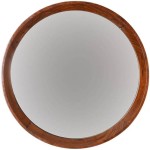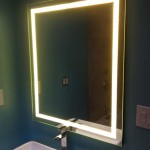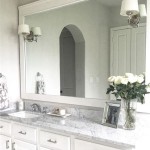Barn Wood Mirror Frame DIY
Reclaimed barn wood offers a unique blend of rustic charm and historical significance, making it a popular choice for DIY projects. One such project, creating a barn wood mirror frame, allows individuals to incorporate this character-rich material into their homes. This article provides a comprehensive guide to crafting a barn wood mirror frame, outlining the necessary materials, tools, and step-by-step instructions.
Materials Required: The foundation of any successful project lies in the quality of its materials. For this project, the primary material is, of course, reclaimed barn wood. The amount needed will depend on the dimensions of the mirror. It is recommended to purchase slightly more wood than calculated to account for potential cuts and adjustments. Other necessary materials include wood glue, wood screws, finishing nails, measuring tape, a pencil, and sandpaper.
Tool Selection: The tools required for this project are commonly found in most DIY toolboxes. A miter saw, or hand saw with miter box, is essential for achieving accurate angle cuts for the frame corners. A drill with appropriate drill bits for both pilot holes and driving screws, a hammer for the finishing nails, and clamps for securing the wood pieces during glue-up are also required. Safety glasses and gloves are recommended for personal protection.
Preparing the Barn Wood: Reclaimed barn wood often comes with a weathered patina, which contributes to its unique aesthetic. However, it may also require some preparation before use. Begin by cleaning the wood with a stiff brush to remove loose dirt, dust, and debris. Depending on the desired final look, sanding may be necessary to smooth out rough surfaces or remove existing finishes. It's important to consider the level of weathering desired before sanding extensively.
Measuring and Cutting the Wood: Accurate measurement is crucial for creating a well-fitting frame. Measure the dimensions of the mirror precisely. The length of each piece of barn wood for the frame should be equal to the corresponding side of the mirror, plus twice the desired frame width. For instance, if the mirror is 20 inches wide and the desired frame width is 3 inches, the top and bottom frame pieces should be 26 inches long each. Once measured, use the miter saw to cut the wood at 45-degree angles. Ensuring the angles are precise is vital for creating tight, seamless corners.
Assembling the Frame: With the pieces cut, the frame assembly can begin. Apply wood glue to the mitered edges of two adjoining pieces. Carefully align the pieces to form a 90-degree corner and secure them with clamps. Reinforce the joint by pre-drilling pilot holes and driving wood screws through the back of the frame into the adjoining piece. Repeat this process for the remaining corners until the frame is fully assembled.
Attaching the Mirror: Once the glue has dried and the frame is secure, the mirror can be attached. Several methods exist for securing the mirror within the frame. One method involves using mirror clips, which are small metal brackets that grip the edges of the mirror and are screwed into the frame. Another method is to use a backing board, cut slightly smaller than the inside dimensions of the frame, to which the mirror is adhered. The backing board is then secured to the frame with finishing nails or screws.
Finishing the Frame: The final step involves finishing the frame to protect the wood and enhance its appearance. Various finishing options exist, ranging from clear sealant to paint or stain. A clear sealant will preserve the natural weathered look of the barn wood, while a stain can deepen or alter the wood's color. Paint provides a more dramatic change and can be used to achieve a specific aesthetic. The choice of finish ultimately depends on personal preference and the desired overall look.
Mounting the Finished Mirror: After the finish has dried completely, the mirror can be mounted. Depending on the size and weight of the mirror, various mounting methods can be used. Smaller, lighter mirrors can often be hung using D-rings or wire hangers attached to the back of the frame. Larger, heavier mirrors may require more robust mounting hardware, such as French cleats or heavy-duty picture hangers. Ensure the chosen mounting method is appropriate for the weight and size of the mirror to ensure secure and safe hanging.
Variations and Considerations: This guide provides a basic framework for creating a barn wood mirror frame. Numerous variations and customizations are possible, allowing for individual creativity and personalization. For example, the width of the frame can be adjusted, or decorative elements can be added. The type of barn wood used can also significantly impact the final aesthetic. Considering these variations and factors, individuals can create unique, personalized barn wood mirror frames that complement their existing décor and reflect their personal style.

Diy Reclaimed Wood Frames The Space Between Mirror Bathroom Rustic Mirrors

Diy Wood Frame Mirror Makeover With Hooks Funky Junk Interiors

How To Build A Diy Wood Mirror Frame The Holtz House

How To Make A Diy Mirror Frame With Reclaimed Wood

Diy Reclaimed Wood Frames The Space Between

Diy Farmhouse Mirror Frame Northstory Co

Diy Reclaimed Wood Frames The Space Between

Diy Rustic Wood Frame Mirror Amanda Katherine

Regular Mirror Framed Out With Old Barn Wood Frame Diy Laundry Closet Makeover

Diy Wood Frame Mirror Makeover With Hooks Funky Junk Interiors








